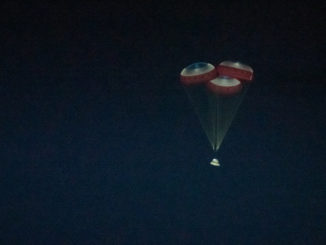Starlink Satellites: Transforming Global Connectivity and the Challenges Ahead
Starlink satellites have quickly grown from an ambitious idea to a global force, reshaping how people access the internet worldwide. As thousands of these satellites orbit above our heads, they promise high-speed connectivity even in the most remote locations. But with this surge in activity, important questions are rising about orbital congestion, competition, and the future of space safety.

What Are Starlink Satellites?
Starlink satellites are part of a colossal constellation launched by SpaceX with the goal of providing fast, reliable internet access globally. These low-Earth orbit satellites form a web above Earth, reducing latency and bridging gaps where traditional infrastructure is limited or nonexistent. Popular in remote rural areas and in regions affected by disasters or war, Starlink’s technology is a leap forward for basic connectivity.
The Expanding Crowd: Starlink and Its Rivals
While Starlink pioneered the concept of large-scale satellite internet, it now shares orbit with an ever-growing number of competitors. Companies like Amazon have entered the race with their own mega-constellations, such as Project Kuiper. A recent launch saw Amazon deploy 27 Kuiper satellites using an Atlas V rocket, marking a significant milestone in the satellite internet industry. Spaceflight Now provides detailed coverage of these launches.
Industry experts warn that these advancements come with substantial risks. Orbital overcrowding is a growing concern as thousands of new satellites, including Starlink satellites, join the race for low-Earth orbit. According to The Verge, if current trends continue, there could be nearly 50,000 objects larger than 10 centimeters in orbit by 2050.
The Risks of Orbital Overcrowding
Satellites provide essential communication in hard-to-reach areas, but as more join the network, space becomes congested. Both functioning satellites and debris from earlier missions fill these orbits. Collisions could trigger a cascade of debris, potentially making parts of space unusable—a scenario sometimes called the Kessler Syndrome.
The International Space Station, even military operations, and ground-based astronomy could face disruptions if this congestion is not managed. Visual observations and tracking become more challenging, and each avoided collision uses valuable fuel and resources. This ongoing challenge makes regulatory cooperation crucial. Unfortunately, global agreements are slow to develop, with the Outer Space Treaty of 1967 being the last major legal framework—written before the rise of commercial satellite networks.
Responsibility, Regulation, and the Way Forward
Most satellite operators, including SpaceX and Amazon, take steps to responsibly manage their constellations. Defunct Starlink satellites are designed to deorbit naturally after a few years, minimizing long-term space junk. However, as more corporate and national players join, the risks increase and coordination becomes more complex.
Experts emphasize the need for clear rules and active collaboration between satellite operators. Without standardized protocols, the space community often relies on timely communication and voluntary action—a risky strategy as the number of actors rises. Collaborative innovation, transparent data sharing, and international agreements will be key for humanity’s continued access to low-Earth orbit.
Conclusion: Starlink Satellites and the Future of Space
Starlink satellites remain at the forefront of the drive for global connectivity, offering solutions where ground networks fall short. But the rise of mega-constellations signals a new era for low-Earth orbit—one filled with competition, opportunity, and urgent challenges. As countries and companies race to fill the skies, coordinated action is more critical than ever. Ensuring a safe, sustainable orbital environment will define the future of satellite internet and humanity’s next big leap beyond our planet.